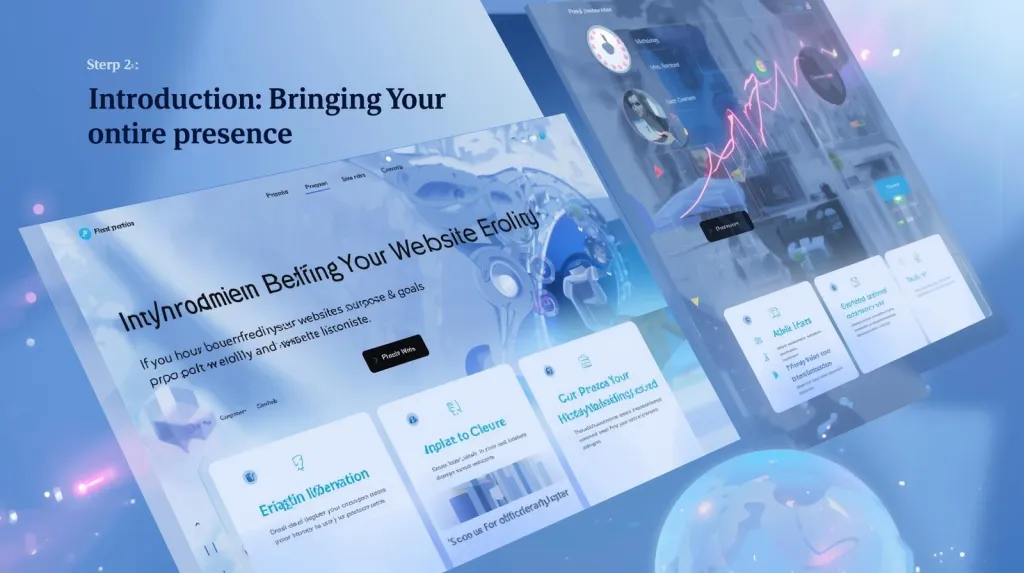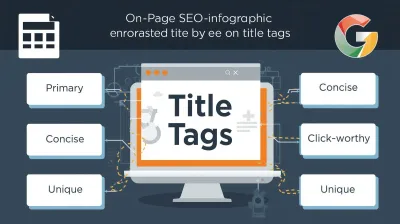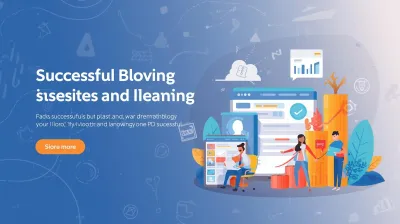Introduction: Bringing Your Idea Online
Ready to launch your own corner of the internet? Creating a website might seem daunting, but in 2025, it's more accessible than ever, even if you've never written a line of code. Whether you're starting a blog, showcasing a portfolio, building a site for your local business, or launching an online store, having a website is crucial for visibility and credibility.
This guide will break down the essential steps to create your first website, from clarifying your goals to choosing the right tools and getting your site live. Don't worry about the technical jargon – we'll keep it simple and straightforward.
Step 1: Define Your Website's Purpose & Goals
Before diving into design or choosing platforms, ask yourself: **Why am I creating this website?**
- Is it a personal blog to share your thoughts?
- A portfolio to showcase your work?
- A business website to attract customers?
- An online store to sell products?
Also, consider **what you want visitors to do** once they arrive. Should they read your articles? Contact you for services? Purchase a product? Sign up for a newsletter? Having clear goals will guide your decisions about structure, content, and the tools you'll need.
Step 2: Choose Your Website Building Platform
This is a key decision. Broadly, beginners have two main paths:
A) Website Builders (The Easiest Route)
- What they are: All-in-one platforms providing drag-and-drop tools, pre-designed templates, web hosting, and security features bundled together. No coding required!
- Pros: Extremely beginner-friendly, fast setup, hosting/security often included, dedicated support.
- Cons: Less design flexibility than CMS, potentially higher long-term costs (depending on features needed), migrating away can sometimes be difficult.
- Who it's for: Beginners wanting maximum simplicity, small businesses needing a quick online presence, portfolios, simple online stores.
For those prioritizing ease of use above all else, modern website builders are incredibly powerful. Tools like the Hostinger Website Builder stand out. They offer intuitive drag-and-drop interfaces, professionally designed templates, and even AI tools to help generate content and images quickly. Crucially, reliable hosting and security are built-in, making it a true one-stop shop.
Easiest Way Online: Hostinger Website Builder
Create a professional website without any coding! Use the intuitive drag-and-drop editor, stunning templates, and AI tools. Hosting and security included.
Try Hostinger Website BuilderB) Content Management Systems (CMS - The Most Flexible Route)
- What they are: Software installed on your web hosting that allows you to create, manage, and publish digital content. **WordPress** is the world's most popular CMS, powering over 40% of all websites. Other examples include Joomla and Drupal (less common for beginners).
- Pros: Unmatched flexibility (thousands of themes and plugins), complete design control, excellent for blogging and SEO, highly scalable, massive community support.
- Cons: Steeper learning curve than website builders, requires separate web hosting, you're more responsible for updates and security (though good hosts help automate this).
- Who it's for: Bloggers, content-heavy sites, businesses wanting full control and scalability, those willing to invest a bit more time learning.
WordPress offers incredible power and adaptability, making it suitable for almost any type of website imaginable.
Step 3: Choose and Register a Domain Name
This is your website's unique address (e.g., `yourwebsite.com`). As discussed previously, aim for a name that is:
- Short and memorable
- Easy to type and pronounce
- Relevant to your brand or topic
You register domains through registrars, but **many web hosts offer domain registration too**. A huge perk is that providers like Hostinger often include a free domain name registration for the first year when you purchase an annual hosting plan, saving you money and simplifying management.
Step 4: Select Your Web Hosting (If using a CMS like WordPress)
If you chose WordPress or another CMS in Step 2, you'll need a separate web hosting plan. For most new WordPress sites, **Shared Hosting** is the perfect starting point due to its affordability and ease of use.
Look for hosting plans specifically optimized for your chosen CMS. For WordPress users, specialized "WordPress Hosting" plans often provide the best experience.
Power Your WordPress Site: Hostinger Hosting
Get hosting optimized for WordPress speed and security. Enjoy **one-click installation, free domain (with annual plans), free SSL, automatic updates,** and expert support.
See Hostinger WordPress PlansStep 5: Build & Design Your Website
Now the creative part begins!
- If using a Website Builder:** Explore the available templates, choose one that fits your vision, and start customizing it using the drag-and-drop editor. Add your text, images, and adjust colors and fonts.
If using WordPress:**
- **Install WordPress:** Most hosts, including Hostinger, offer a simple "one-click" installer from their control panel.
- **Choose a Theme:** Themes control the visual appearance of your site. There are thousands of free and premium themes available. Start with a well-regarded free theme like Astra, Kadence, or Blocksy.
- **Install Essential Plugins:** Plugins add functionality. Start with essentials like an SEO plugin (e.g., Rank Math or Yoast SEO), a contact form plugin (e.g., WPForms), and potentially a security plugin (though good hosting covers much of this).
Step 6: Add Your Content
A website structure is nothing without content. Start creating your core pages:
- **Homepage:** Your site's front door – make a strong first impression.
- **About Page:** Tell visitors who you are and what your site is about.
- **Contact Page:** Provide ways for people to get in touch.
- **Services/Products Page (if applicable):** Detail what you offer.
- **Blog Posts (if applicable):** Start publishing articles relevant to your audience.
Focus on creating high-quality, informative, and engaging content.
Step 7: Launch & Promote Your Website
Before shouting from the rooftops:
- **Review Everything:** Proofread content, check that all links work, ensure images load correctly.
- **Test on Mobile:** Make sure your site looks and works great on different screen sizes.
- **Submit to Search Engines:** While Google will eventually find your site, you can speed things up by submitting your sitemap via Google Search Console (it's free!).
- **Promote:** Share your new website on social media, in your email signature, and tell your network!
Conclusion: Your Online Journey Begins Now
Creating a website in 2025 is well within reach for beginners. By defining your goals, choosing the right platform (whether the simplicity of a builder like **Hostinger Website Builder** or the flexibility of WordPress with reliable hosting like **Hostinger**), securing a domain, adding quality content, and launching effectively, you can establish a powerful online presence.
Don't strive for perfection immediately. Get your site live, gather feedback, and continue learning and improving. Your online journey has just begun!
Ready to build your website today?
Choose Your Path with Hostinger (Builder or Hosting)!





